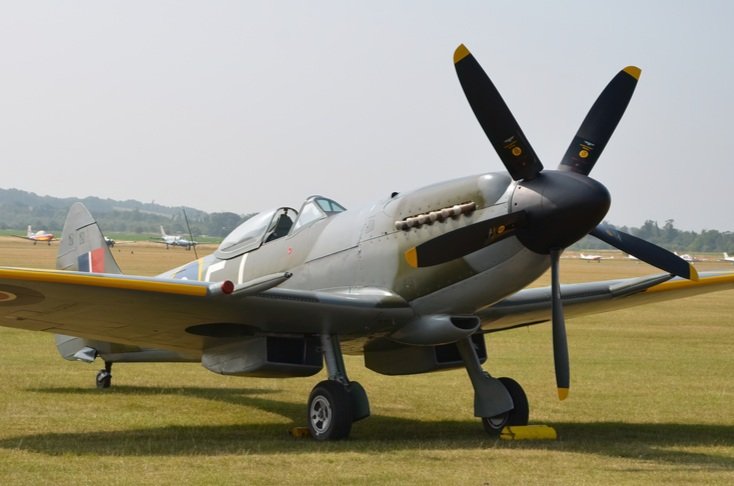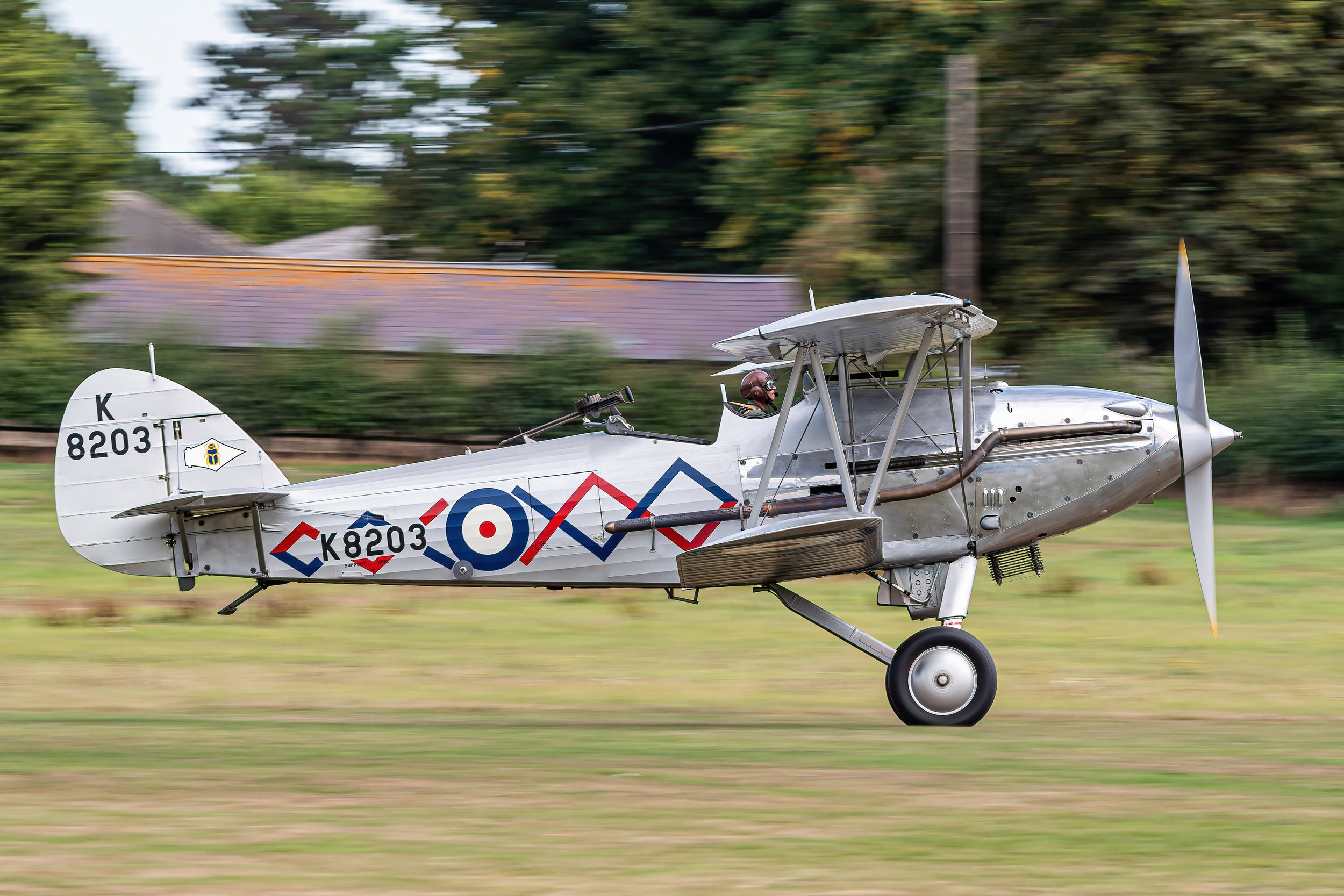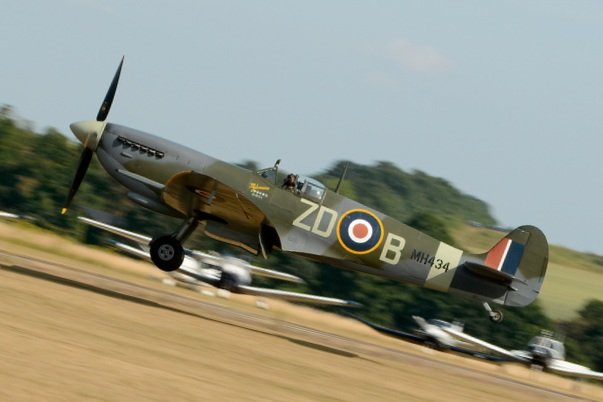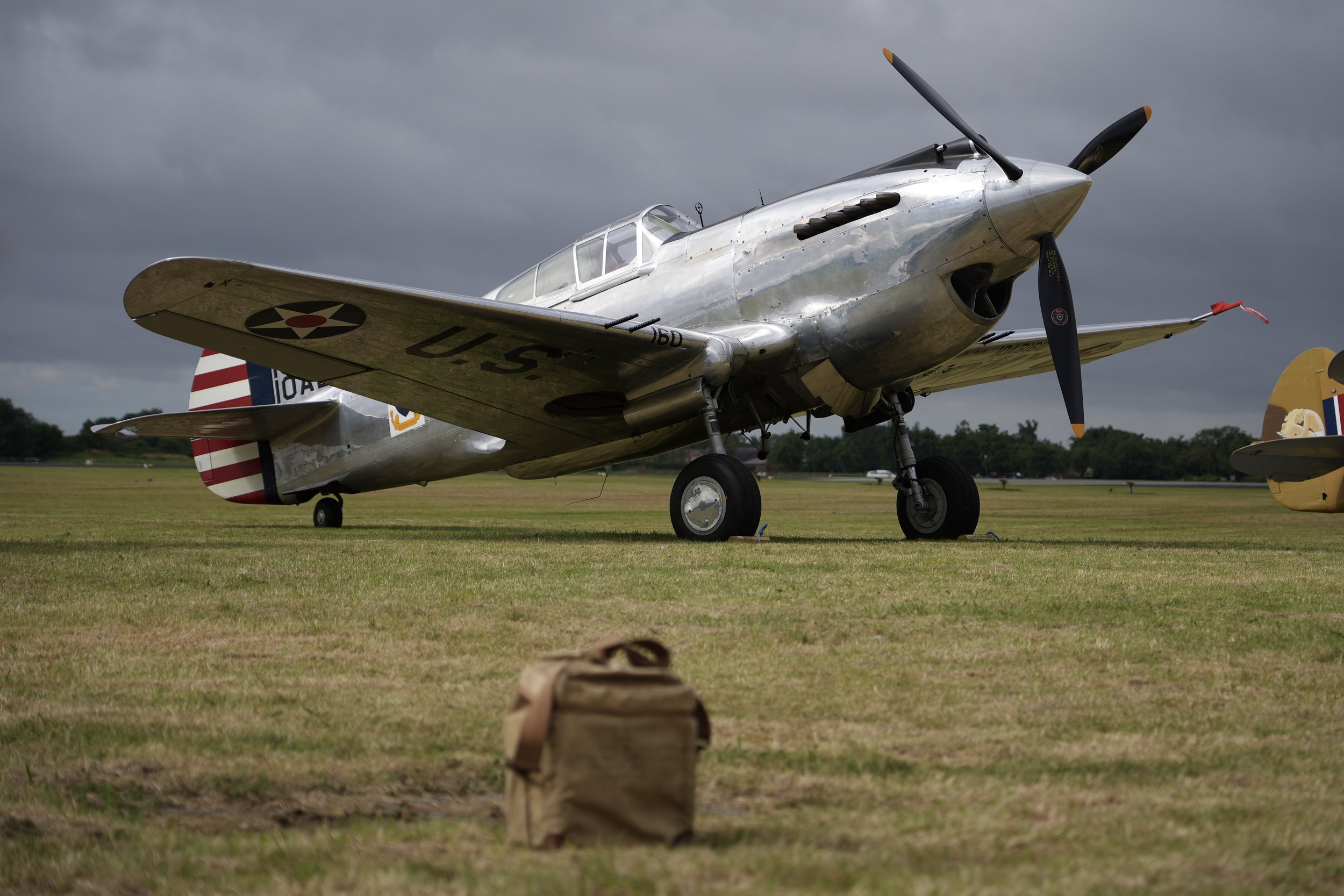Hurricane G-CHTK
Year built
1940
Aircraft
Hurricane X
Base
London Biggin Hill Airport
This Battle of Britain-era Hurricane was originally built as a Mk.I in Canada by Canadian Car & Foundry in 1940, she was shipped to the UK and designated an Mk.X - this was to differentiate from the UK-built aircraft. Upon arrival, she was assembled and stored until transferred to the Royal Navy. She was intended to be converted to Sea Hurricane spec but no modifications were made; she was essentially a Mk.I used by the Royal Navy as a land-based trainer until lost in a mid-air collision with another Hurricane.
Most of the wreckage was not recovered until the 1960's where upon it went into storage until purchased by the newly formed Hawker Restorations Ltd in 1994. Returned to flight in June 2000 as G-TWTD and with Douglas Bader's markings of LE-D, her time in the UK was short as by April 2001 she was sold to Tom Friedken and shipped to the US. She became N33TF and was based in California and later Texas as part of the Comanche Fighters. Sold to Peter Monk of the Biggin Hill Heritage Hangar in 2012, she has been flying back in the UK as G-CHTK since the Spring of 2013.
Currently painted to represent Hurricane Mk.I P2921 ‘Blue Peter’ flown by Pete Brothers of 32 Squadron, Biggin Hill in 1940
| Back to Top |
Hawker Hurricane X
The Hawker Hurricane is a British single-seat fighter aircraft of the 1930s–40s that was designed and predominantly built by Hawker Aircraft Ltd. for service with the Royal Air Force (RAF). It was overshadowed in the public consciousness by the Supermarine Spitfire's role during the Battle of Britain in 1940, but the Hurricane inflicted 60 percent of the losses sustained by the Luftwaffe in the engagement and fought in all the major theatres of the Second World War.
The Hurricane originated from discussions between RAF officials and aircraft designer Sir Sydney Camm about a proposed monoplane derivative of the Hawker Fury biplane in the early 1930s. Despite an institutional preference for biplanes and lack of interest from the Air Ministry, Hawker refined their monoplane proposal, incorporating several innovations which became critical to wartime fighter aircraft, including retractable landing gear and the more powerful Rolls-Royce Merlin engine. The Air Ministry ordered Hawker's Interceptor Monoplane in late 1934, and the prototype Hurricane K5083 performed its maiden flight on 6 November 1935.
In June 1936, the Hurricane went into production for the Air Ministry; it entered squadron service on 25 December 1937. Its manufacture and maintenance were eased by using conventional construction methods so that squadrons could perform many major repairs without external support. The Hurricane was rapidly procured prior to the outbreak of the Second World War in September 1939, when the RAF had 18 Hurricane-equipped squadrons in service. The aircraft was relied on to defend against German aircraft operated by the Luftwaffe, including dogfighting with Messerschmitt Bf 109s in multiple theatres of action.
The Hurricane was developed through several versions, into bomber-interceptors, fighter-bombers, and ground support aircraft as well as fighters. Versions designed for the Royal Navy known as the Sea Hurricane had modifications enabling operation from ships. Some were converted as catapult-launched convoy escorts. By the end of production in July 1944, 14,487 Hurricanes had been completed in Britain, Canada, Belgium and Yugoslavia.
Hurricane Mk IV was the last major change to the Hurricane. It included the introduction of the "universal Wing", a single design able to mount two 110 or 230 kg bombs, two 40 mm Vickers S guns, drop tanks or eight "60 pounder" RP-3 rockets. Two 7.7 mm Brownings were fitted to aid the aiming of the heavier armament. Despite persistent reports actually fitted with the same Merlin XX as the mark II. All Merlin 27 were modified to Merlin 25 and used in Mosquitoes, there were only 16 production Merlin 24 by the time over 300 mark IV had been delivered. The individual aircraft cards held by the RAF museum reports the final mark IV had Merlin XX. The radiator was deeper and armoured. Additional armour was also fitted around the engine. 524 was built by Hawker between December 1942 and March 1944.
| Back to Top |
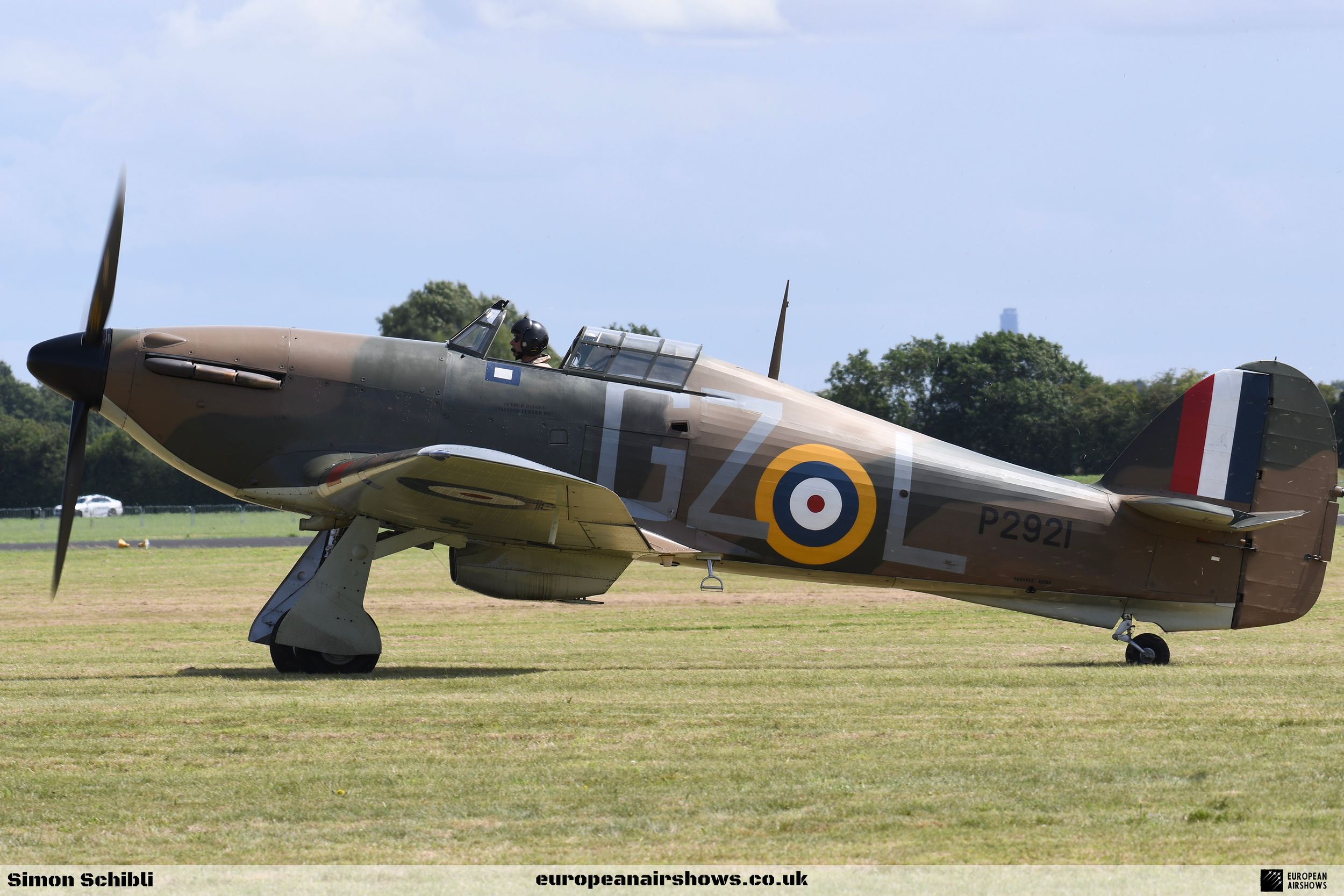
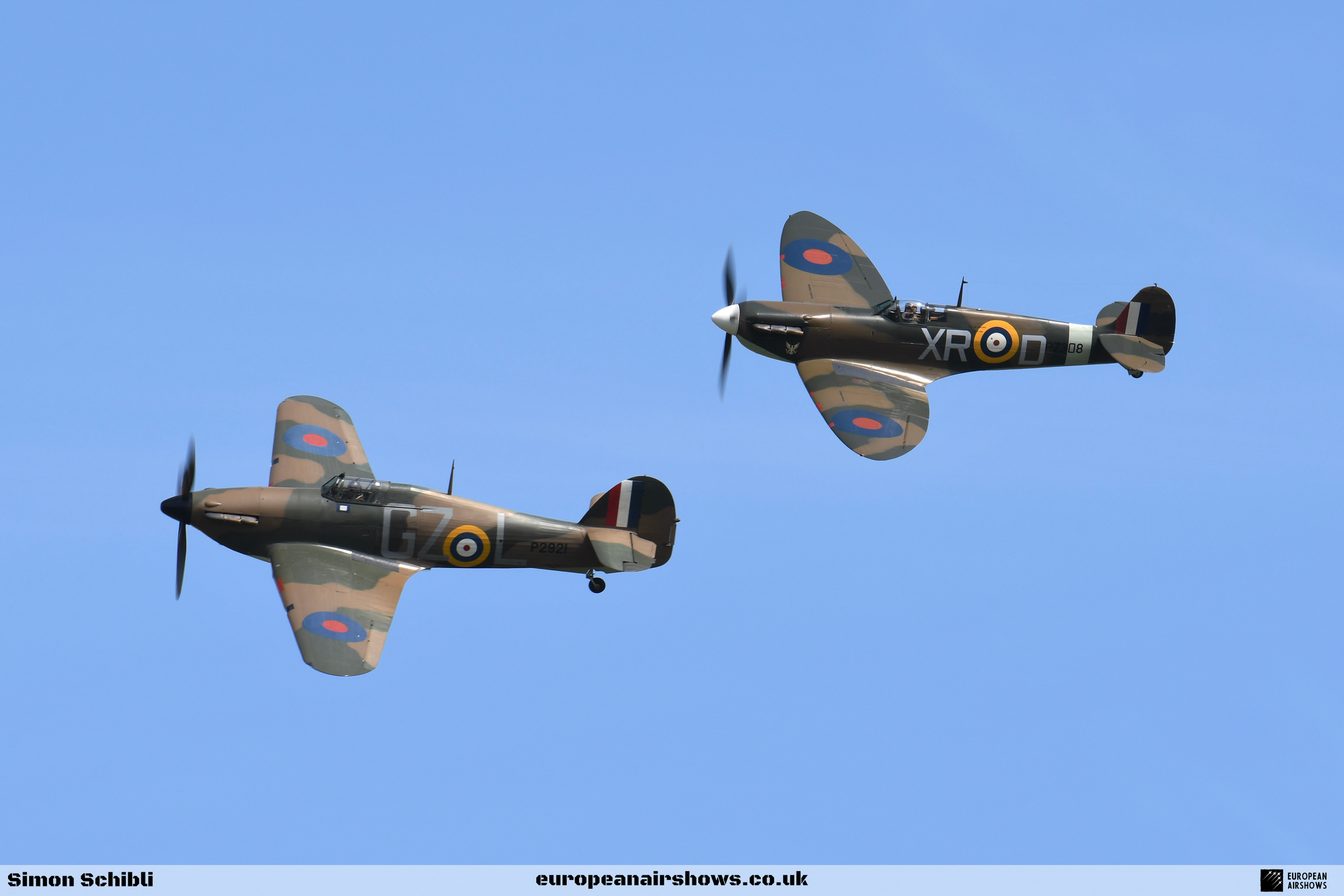
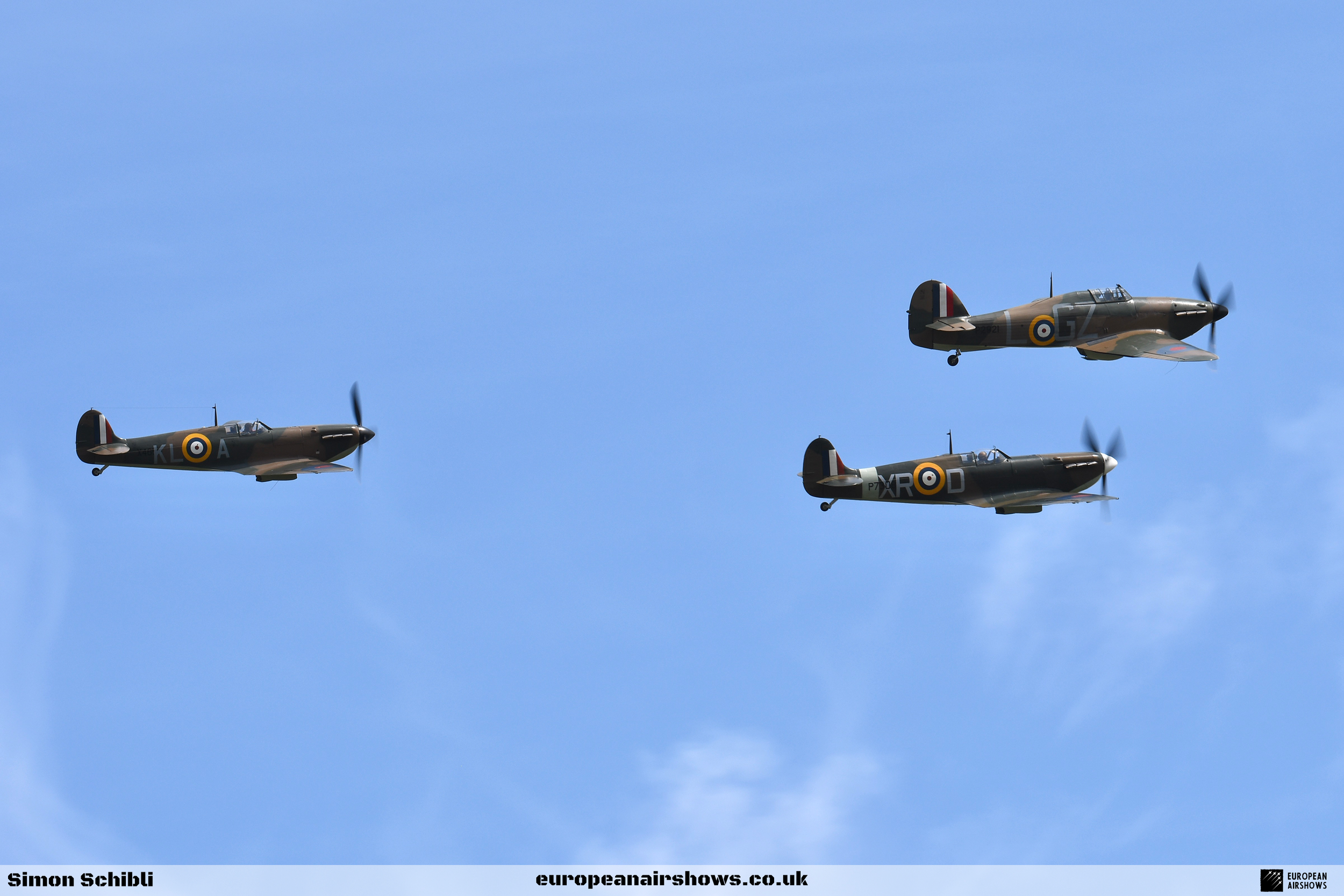
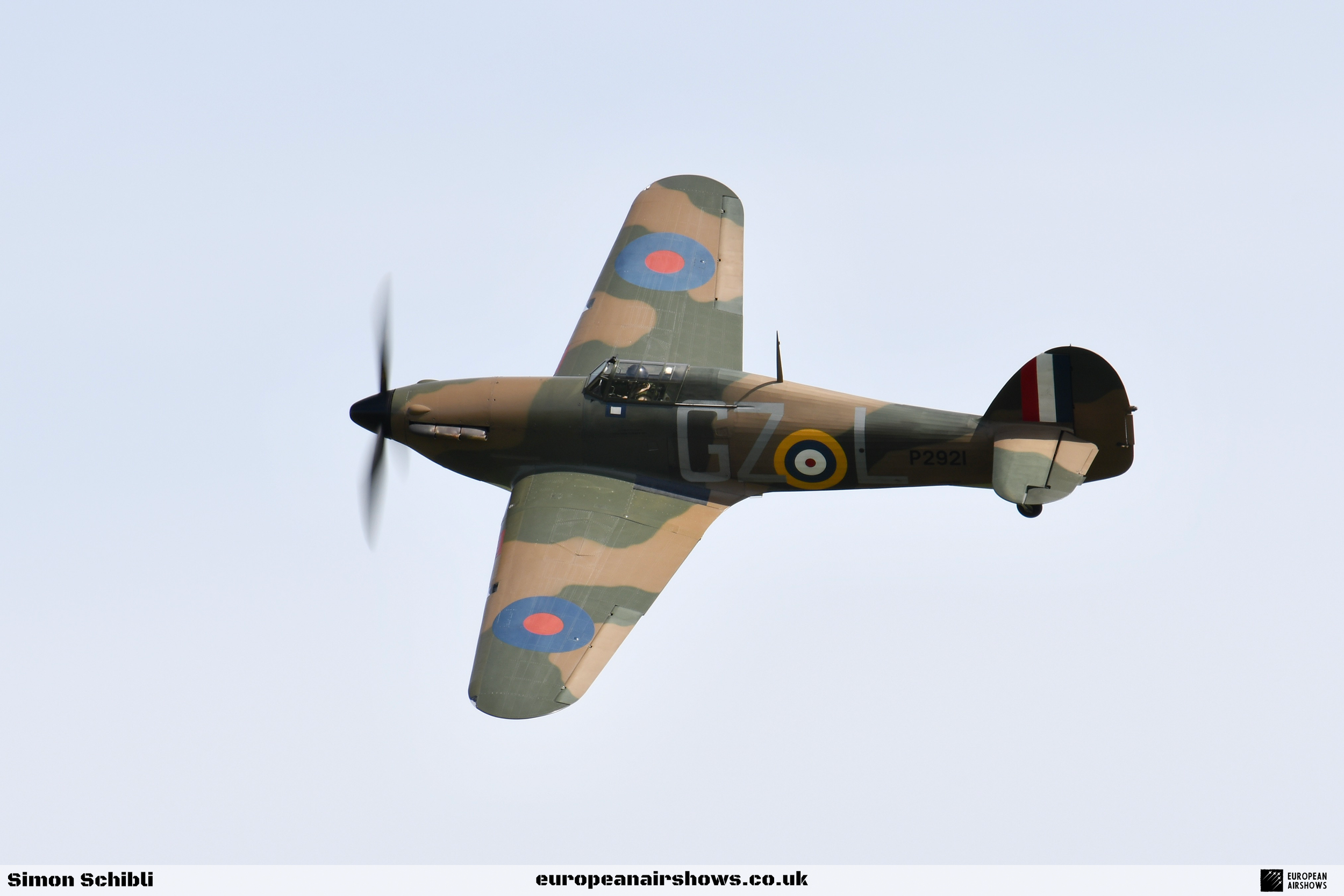

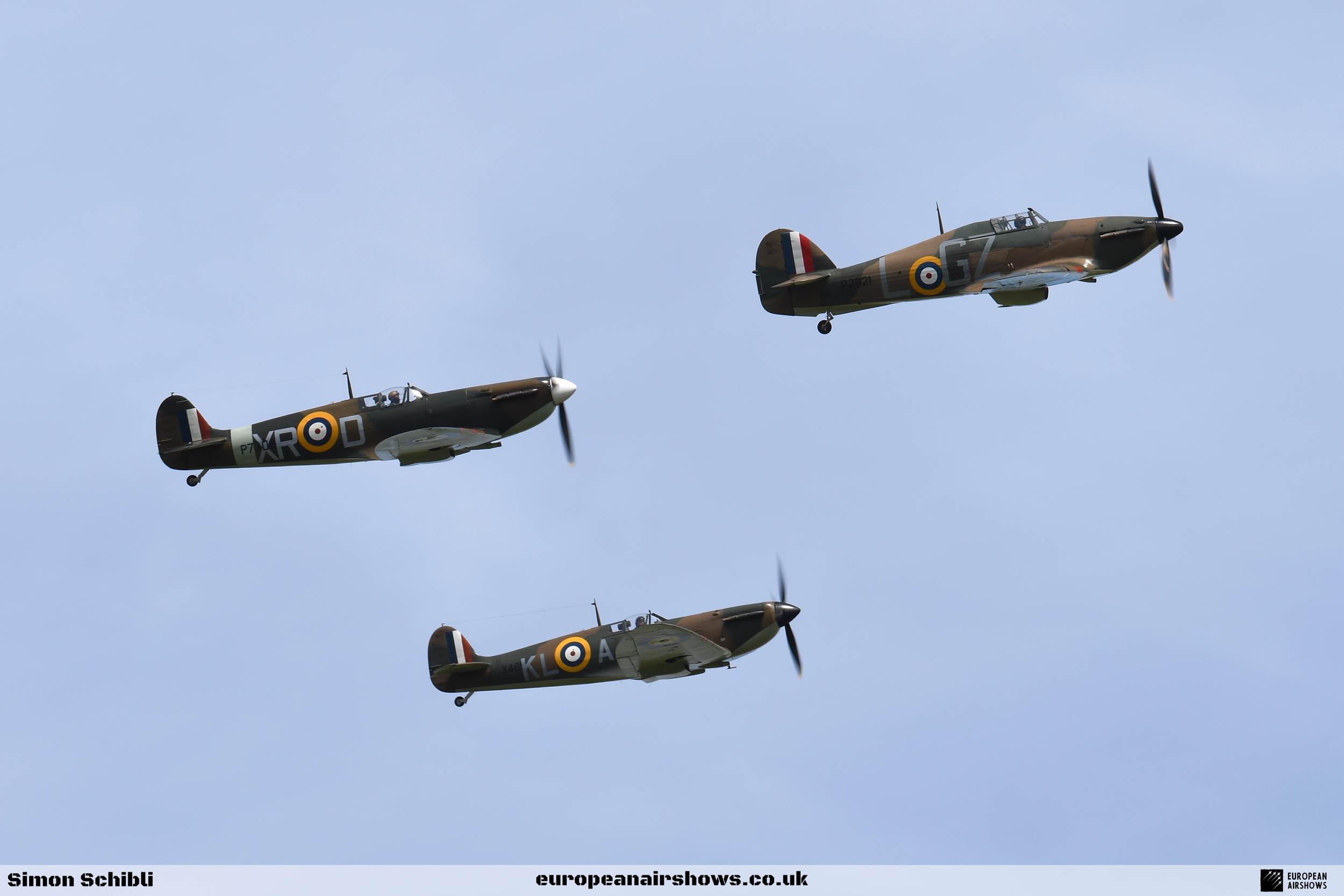
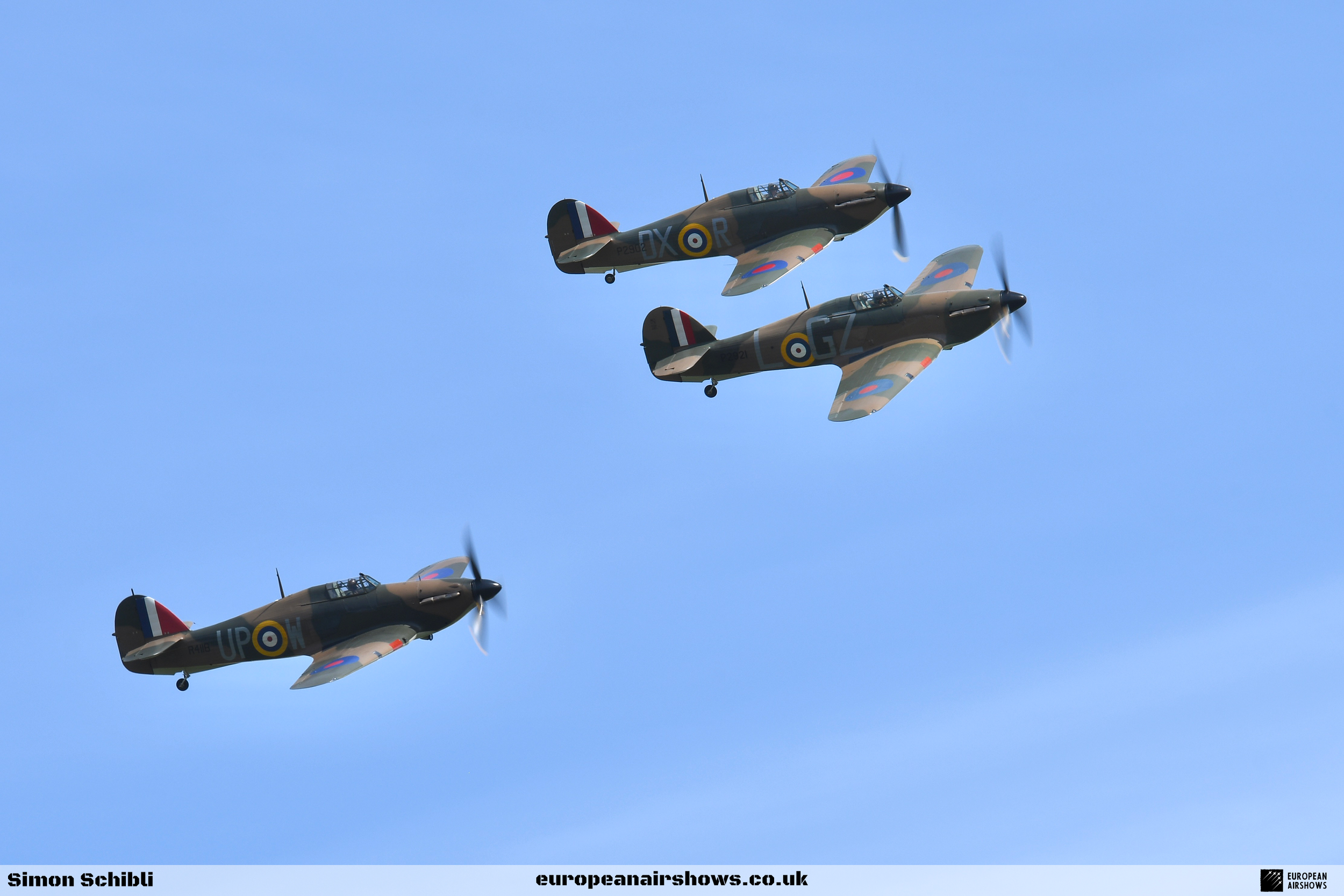
| Back to Top |






















